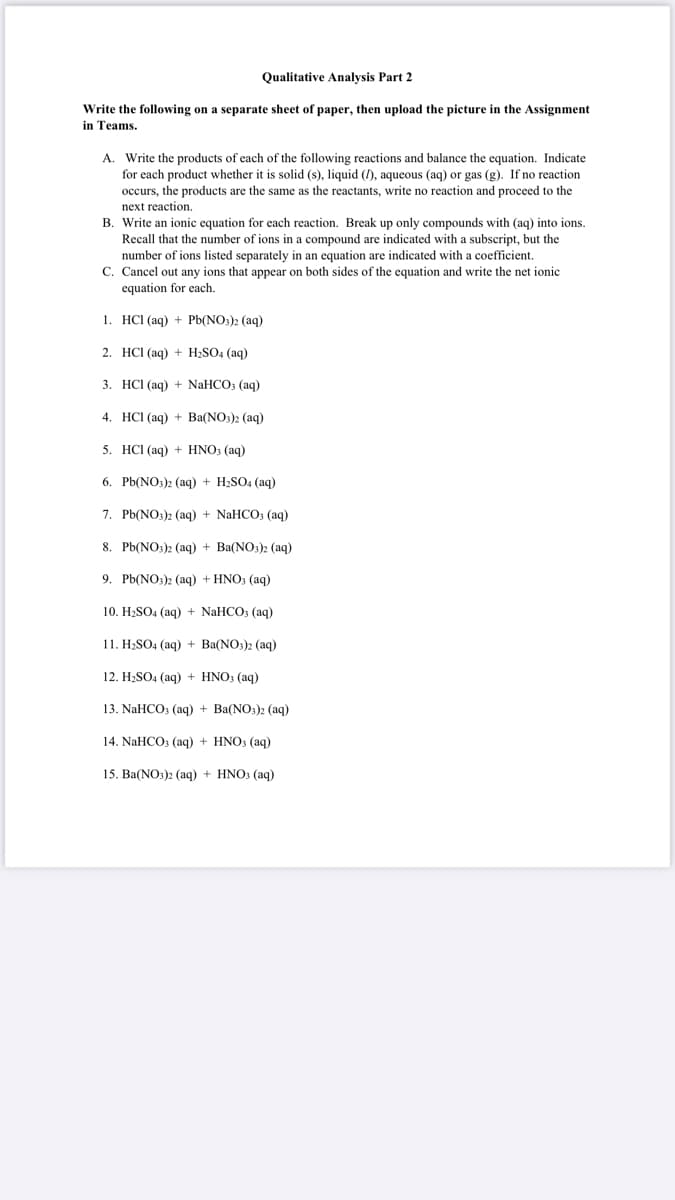Write the following on a separate sheet of paper, then upload the picture in the Assignment in Teams. A. Write the products of each of the following reactions and balance the equation. Indicate for each product whether it is solid (s), liquid (1), aqueous (aq) or gas (g). If no reaction occurs, the products are the same as the reactants, write no reaction and proceed to the next reaction. B. Write an ionic equation for each reaction. Break up only compounds with (aq) into ions. Recall that the number of ions in a compound are indicated with a subscript, but the number of ions listed separately in an equation are indicated with a coefficient. C. Cancel out any ions that appear on both sides of the equation and write the net ionic equation for each.
States of Matter
The substance that constitutes everything in the universe is known as matter. Matter comprises atoms which in turn are composed of electrons, protons, and neutrons. Different atoms combine together to give rise to molecules that act as a foundation for all kinds of substances. There are five states of matter based on their energies of attraction, namely solid, liquid, gases, plasma, and BEC (Bose-Einstein condensates).
Chemical Reactions and Equations
When a chemical species is transformed into another chemical species it is said to have undergone a chemical reaction. It consists of breaking existing bonds and forming new bonds by changing the position of electrons. These reactions are best explained using a chemical equation.

Trending now
This is a popular solution!
Step by step
Solved in 4 steps









